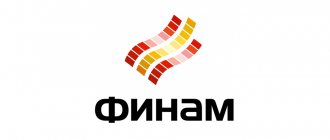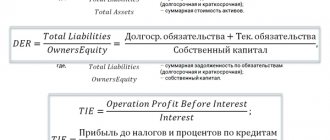In order to attract investors and customers to the project, you need to know how to write a business case - an example of the correct preparation of which will be shown in the article. The compilation criteria are presented in Article 105 of the Rules of the State Duma of the Russian Federation. The objectives of the justification are to explain the essence of the project and calculate its financial feasibility, considering factors such as costs, payback periods and net profit. The economic document must provide calculations and analyzes showing the expected benefits for sponsors.
The essence of the concept of justification
A business case is a document that states the reasons why an organization should undertake a project. It considers only one aspect - financial benefit. When drawing up an economic argument, it is necessary to conduct a detailed analysis of the costs of implementing the project, the benefits received from it and compare them, as well as indicate alternative options and solutions in the justification. A well-written rationale clearly shows the risks and potential rewards of introducing a new idea, so it is useful to both business managers and investors.
To make it easier to understand, you can compare the economic reasoning behind it to the analysis that a person makes when making a major purchase, such as a new computer. He selects several products with the necessary functions and qualities, determines their price category, and then compares them, choosing the best one. Then, having decided on a product, a person calculates the required economic amount, taking into account all costs and additional costs (for example, delivery, setup or maintenance) and decides whether the product is suitable for him.
The same type of analysis is carried out when drawing up the financial and economic justification for the project. It differs from the example with a new purchase only in that the money is spent not on electronics or household appliances, but on improving the business. Of course, there are many more factors and details that need to be taken into account in this process, but the essence remains the same.
Main types
There are quite a few types of investment concepts. They are classified according to different indicators. Among the main categories of projects, several examples can be identified :
- Duration of implementation - projects can be short-term (less than three years), medium-term, or long-term (over 5 years).
- The volume of financing is small and medium, large and mega-large.
- Specialization – commercial, scientific and technical, industrial, environmental.
- Scale – from global and large-scale to local.
- The level of risks, as an example, is low and high.
Every year thousands of investment business plans are launched in the Russian Federation.
Goals of justification and objectives of the document
The business case rarely acts as an independent document. Typically, the information present in it is included in the initialization form. Only for large projects, the implementation of which involves significant financial risks, the economic proof is drawn up as a separate paper attached to the main package of documents.
The main task of economic confirmation is to convey to readers information about the profitability and feasibility of implementing the idea described in it. To do this, the justification document must contain the following data:
- the amount of costs required to implement the project, their payback period and justification for the expected benefits;
- income, market share and other characteristics of an existing enterprise;
- information about the condition, profitability and development prospects of the area in which the company operates (justification must be carried out by the country and region where the enterprise operates);
- a general description of this economic sphere, the types of products and services it produces, their prices;
- justification of cash flows, sources from which funds for the project will be received and covered;
- reasons for choosing certain types of equipment and machinery, their comparison with alternatives;
- cost-income ratio;
- justification for dividing expenses into permanent and temporary;
- calculation of profits at different levels of demand and the corresponding economic payback periods;
- plan for implementing the project into an existing enterprise;
- analysis of the degree of readiness of the company’s equipment and employees for the implementation of the project; general economic assessment of the attractiveness of investments.
Since the economic argument is drawn up mainly for ideas for improving and modernizing the work of an existing enterprise, such things as market analysis, drawing up and justifying a marketing plan are not included in it. The purpose of the document is to analyze the idea from the financial and economic side, without organizational and technical details.
Much of the economic underpinning is devoted to discussing alternatives and comparing them with the current supply. It is necessary to justify why certain types of equipment and materials from specific suppliers were selected. To do this, a detailed analysis of each of the alternatives is carried out, taking into account their technical characteristics, prices and labor costs during operation.
Calculation part
Difficulties often arise when calculating an investment business project. Potential investors evaluate it from an economic perspective, so it is extremely important to correctly determine the relevant indicators.
Net present value
To calculate the parameter, the formula is used:
As an example of an investment plan, we can take a company that has decided to replace obsolete technical equipment in one workshop. It is necessary to spend 84 million rubles on the purchase, logistics costs and installation of machines. The cost of dismantling obsolete equipment will be fully covered by its sale on the market.
The lifespan of the invested funds is equal to the obsolescence of new machines and is 6 years. The company's discount rates and profitability are equal and amount to 14%. The net income from the operation of installed machines by year is, respectively, 12, 36, 48, 46, 48 and 38 million rubles.
Substituting all the necessary values into the formula, you get NPV = -84+12/(1-0.14)+36/(1-0.14)2+48/(1-0.14)3+46/(1- 0.14)4+48/(1-0.14)5+38/(1-0.14)6 = 56.926 million rubles.
In this example, the discount rate does not change, which is extremely rare in practice. To get the most accurate MPV value, an approximate % rate for each year is most often used.
You should also get the return on investment over time in months or years. To calculate it, the following formula is used:
When calculating the investment efficiency for the project in the example, PP=3, since 3 t =1 CF t (12+36+48) > I 0 (85).
Structure and content of justification
Officially, there are no strict requirements for the structure and style of presentation of the business case. This means that the form and procedure for presenting information depends on the specifics of the company’s activities, as well as the intended readership. However, all these documents are quite similar. Their approximate content looks like this:
- The purpose of justification. At this economic point, it is necessary to explain why the company needs the project, what functions it will perform and what benefits it will bring. This point should be disclosed in as much detail as possible, because it most often depends on it whether the work will be accepted and funded.
- Method of implementation. Having explained the economic goal, you need to name possible ways to achieve it and describe which method was chosen for this. It is also necessary to compare the selected methods with alternative ones and justify why they are the most effective. In addition, it is worth providing a description of the selected technical solutions.
- Economic data. It is necessary to describe in detail all income and expenses from the project, indicate the amount of initial investments and the method of receiving them. Support the information with calculations of all parameters.
- Execution plan. It is necessary to justify the minimum and maximum deadlines for completing the project, as well as describe the amount of labor and financial costs for its implementation. For convenience, you can divide the entire economic period into stages (for example, the purchase of equipment, its delivery, installation and configuration, personnel training and the start of production of new products) and analyze each of them. It is also necessary to describe all factors that could create a delay in the implementation of the project or speed it up.
- Responsibilities of employees. Indicate how many people are needed to implement the idea and what tasks each of them will have. In addition, justify the need for each employee to complete the assigned task.
- Performance forecasts and assessment of attractiveness for investors. Calculated based on economic data.
- Conclusions. Recommendation for implementing the project or sending it for further refinement to find more effective solutions.
A correctly drawn up economic proof will be useful even if the justification is not approved - the collected information will help to find shortcomings and correct them before the company suffers losses. The specifics of its content depend on the specifics - for example, in construction you will need an estimate and calculation of materials, and in the production of food products - data on their shelf life and storage equipment.
3PD system
In the 3PD system, the distributor provides all services on the territory: receiving orders, delivering goods and other operational activities. The system is used by companies whose margins and turnover do not allow them to use more efficient methods, or by companies that do not want to invest in product development through distribution and control of retail shelves. For certain product categories, such as grocery, which have the least brand protection and are the most price-sensitive, manufacturers cannot pay national sales representatives. The system can be successful in companies that offer a unique (limited competition) or low-cost product, have a small number of items in the line and have a high sales volume of each of them. The limitations of the 3PD system lie in the ability to grow and control sales. The distributor's price list contains 200–2000 items; the sales representative cannot effectively offer the entire assortment to the store. As a rule, with 3PD, territorial agreements are not concluded and several distributors work in one place. As a last resort, the system under consideration operates a call center: stores place orders by phone, and distributors carry out delivery. The latter do not always have or can fulfill obligations regarding product exclusivity (the absence of products of similar competitor names) in their price list. There are trends toward the allocation of separate teams of sales representatives to work with competing products and the introduction of barriers to additional bonuses for sales representatives from manufacturers. Few companies operate using the 3PD system at the national level; most of them have their own sales representatives in large cities, for example SCA Hygiene Products Russia, United Bakers.
Mandatory justification data
Regardless of the structure and order of presentation of the economic argumentation, it is imperative to include all the basic data on the financial relationships of the project. Examples of required information:
- a general description of the rationale, its objectives at the enterprise, impact on the development of the economy (both an individual company, a region or a country);
- analysis of market conditions and the project’s adaptability to them;
- economic costs;
- characteristics of the changes being introduced, from the point of view of profitability;
- payback period taking into account all interest and inflation (it is important that investing in a project is more profitable than simply keeping money in a deposit account);
- assessing the attractiveness of the project for investors.
These rationale points remain the same in the economic rationale for a company in any industry. They can be supplemented with new sections and subsections, depending on the characteristics of the enterprise and the interests of the intended circle of readers.
Basis for classification of projects
Projects can be classified according to the timing of implementation, scale, quality of development and implementation, location of implementation and the amount of funds used. But in reality, the variety of types of projects is even greater.
Thus, for the classification of projects there are the following grounds:
- Project class (depends on the structure, composition and subject area)
- Type of project (depends on the field of activity in which it is being implemented)
- Project scale (depends on size, number of participants and degree of impact on the environment)
- Duration of the project (depends on the duration of implementation)
- Complexity of the project (depending on technical, organizational, financial, technological and other aspects)
Now let's move on directly to the description of some types of projects, namely:
- Organizational projects
- Economic projects
- Social projects
- Technical projects
- Investment projects
- Educational projects
Material and intangible elements of justification
A thorough and detailed analysis of all material and intangible components of the project is necessary in order to write a business case. Examples of material elements that are worth considering and describing:
- reduction in production costs, equipment maintenance and other needs that will be obtained as a result of the project;
- sources of additional income, the likelihood of receiving it and its size;
- growth of the enterprise's market share;
- satisfying the needs and desires of consumers, growing the customer base as a result of increasing the quality and quantity of products and/or services;
- reduction of economic costs for justification, as well as repair and maintenance costs;
- assessment of the expected cash inflow taking into account all factors.
Intangible components of justification must also be present in the economic proof. These include all unplanned, but possible and highly probable changes that will bring additional profit or loss to the company. Among them are:
- costs of the transition stage of the economy that will appear during the implementation of the project;
- justification of operating costs;
- construction of new business processes and transformation of current ones, costs for their optimization;
- changes in the responsibilities of company employees.
In addition to justifying the profitability of the project, when drawing up an economic argument, one must also pay attention to alternative options for implementing the idea under consideration and make a detailed comparison between them. Based on this comparison, you can make suggestions and ideas for improving the project.
Example of objectives of an investment business plan
An investment business project is a combination of legal and financial documentation reflecting the economic benefits of investments in a specific object. The investment concept must contain design and estimate documents, as well as a detailed action plan for the expenditure of funds. Often, developers use an example of an innovative project with calculations and, using it as a basis, create their own.
When developing an investment project, you need to perform certain activities:
- Justify your business idea.
- Explore an example of the project's potential to realize all the invested funds.
- Develop and approve project documents.
- Conclude all necessary agreements.
- Provide the project with finances and resources.
- Commission the facility and launch the production cycle.
Any example of an investment business has several features. They are important for the investor and must be well developed. The most significant among them are :
- Example of cost estimation. Any investment plan can be presented in the form of a specific amount of money.
- Payback. During the implementation of the business plan, it is important to recover all costs.
- Time cycle. Profit can only be made after a certain amount of time has passed.
- An example of a project idea should be expressed as concisely as possible, in a maximum of five sentences.
Project scale
The scale of projects is another criterion for their classification.
Thus, mini-projects, mono-projects, multi-projects and mega-projects can be distinguished.
Mini-projects are very small projects, with a simplified structure and a minimum number of participants
Mono-projects are individual projects of different types, types and scales, consisting of several mini-projects
Multi-projects are projects that include a number of mono-projects and are characterized by greater complexity and number of participants
Mega-projects are projects that include a number of mono- and multi-projects; such projects can be of regional, state or interstate scale and significance
Organizational projects
Organizational projects refer to the reform and creation of new organizations, as well as the implementation of certain events, for example, conferences, forums, symposia, seminars, etc.
The main characteristics of organizational projects are:
- Specific goals aimed at improving the organization of the system and therefore difficult to quantify
- Pre-set deadlines for implementation
- Resources
- Cost control from the point of view of economical implementation
Technical projects
Technical projects involve the development of some new product.
The main characteristics of technical projects are:
- Specific main goal
- Additional goals that may change as the project progresses
- Precisely defined deadlines for implementation, which change only in very rare cases
- Clearly defined costs
- Limitations in the planning and implementation process due to the technical side of the issue











